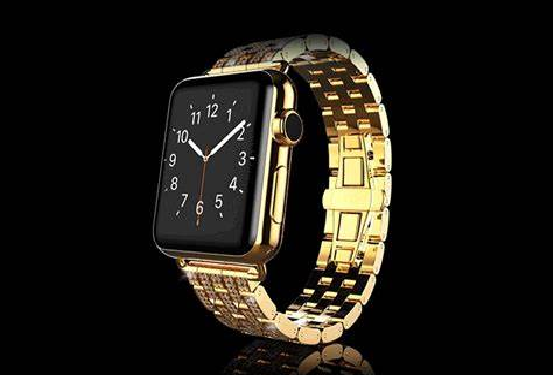
Luxury watches are all about tradition, craftsmanship, and modern innovation. It’s a world on its own where timepieces are not just a device to tell time but symbols of class, wealth, prestige, heritage, and personal achievement. Among the many popular names in this industry, three brands stand out as the epitome of excellence: Patek Phillippe, Audemars Piguet, and Vacheron Constantin. These watchmakers, often referred to as the “Big Three, or Holy Trinity of Watches,” have set the standards for quality in the luxury watch market.
Are these brands still leading the watch-making trends? What is their role in influencing the luxury watch market? If such questions pop into your head, you’ve come to the right place. Not only will we disclose the latest insights on the luxury watch market, but also share information regarding the current trends and the role of these influential market leaders. Keep reading!
Luxury Watches and How They Evolved with Time
Luxury watches have undergone a continuous evolution. Originally, timekeeping devices were pocket watches, mainly loved and flaunted by the elite. These class-defining pieces were adorned with intricate designs. The transition to wristwatches marked a significant shift inspired by practicality and the changing needs of the modern individual. Over the decades, technological advancements have revolutionized watchmaking entirely. Features like automatic movements, chronographs, and water resistance were some popular shifts we’ve all witnessed. Despite these innovations, luxury watches remain rooted in craftsmanship and heritage.
Current Trends in the Luxury Watch Market
Rise of Smartwatches and Luxury Hybrids
Seeing the shift towards high-tech advancement in watchmaking, traditional watchmakers also decided to give this trend a try – hence the advent of smartwatches. These smartwatches blend classic design with modern functionality to cater to the growing needs. For instance, some high-end brands have launched models with features like fitness tracking and notifications, which are especially beneficial for a tech-savvy consumer who values both tradition and innovation.
Vintage and Retro
We’ve also witnessed a growing fascination with vintage-inspired designs in the luxury watch market. Collectors and enthusiasts are drawn to the charm of retro aesthetics, which we believe never really gets old. There’s a charm to these watches that’s hard to challenge. The Big Three have masterfully tapped into this trend, reintroducing classic models with contemporary twists. These timepieces celebrate their rich heritage and legacy and also appeal to modern tastes.
Sustainability
For consumers who are more environmentally conscious, sustainability has become a significant trend in luxury watchmaking. Brands are increasingly adopting ethical practices to cater to such needs. Practices such as using recycled materials and ensuring fair labor conditions are widely adopted. The Big Three are no exception. In fact, most known brands in the watchmaking industry are taking steps to minimize their environmental impact while maintaining their commitment to quality.
Market Dynamics and Consumer Behavior
Shifting Demographics
The primary reason for changing market dynamics is catering to younger consumers, who prefer convenience alongside luxury. With younger consumers increasingly entering the scene, watchmakers feel obliged to entertain their evolving demands. Millennials and Gen Z are drawn to luxury watches not just for their functionality but as status symbols and fashion statements. This younger demographic values uniqueness, often seeking brands that offer personalized experiences.
Global Market Trends
Then there are emerging markets, particularly in Asia and the Middle East, experiencing significant growth in the luxury watch industry. Younger individuals in these regions also have a strong appreciation for things that add to their status symbol. And luxury watches easily fit that description. Cultural factors, such as gifting traditions and the importance of status symbols, play a crucial role in the demand for luxury watches.
Role of Social Media and Influencers
And since we’re talking about the young generation, we can’t skip the role of social media influencers. Social media platforms have become powerful tools for luxury watch brands to connect with their audience. Influencers and brand ambassadors showcase their unique and luxury watches, creating aspirational content that instantly clicks with their followers. Campaigns featuring celebrities and prominent figures wearing high-end luxury watches significantly boost brand visibility and its demand.
Investment Potential of Luxury Watches
Resale Value
The best part about putting money into these super-expensive, high-end watches is that it is considered an investment. The brand name, quality, and historical significance of these watches contribute to their high resale value. Collectors seek out limited-edition models and watches with unique features, impacting its demand and prices. Luxury watch brands are known for producing watches that not only retain but appreciate in value over time.
For example, Patek Phillippe Nautilus has seen substantial appreciation due to its iconic design and limited production. Similarly, the Audemars Piguet Royal Oak and Vacheron Constantin Overseas have become highly coveted in the secondary market, with collectors willing to pay a premium for these timepieces.
Future Outlook and Predictions
Innovation and Technological Advancements
The future of luxury watchmaking is likely to see continued growth in terms of innovative technologies. Brands may explore advancements in materials, functionality, and even improved durability features. Additionally, the incorporation of AI and smart technology could lead to new functionalities that would take the watchmaking world by storm.
Sustainability as a Core Value
Moving forward, we believe that sustainability will remain a core focus for luxury watch brands. Since consumers are becoming more aware, they are increasingly demanding transparency and ethical practices. This is compelling brands to adopt sustainable sourcing and production methods to come up to their standards. For brands to remain relevant to their consumers, setting sustainability as a primary benchmark has become essential.
Conclusion
As discussed earlier, the luxury watch market has become a dynamic and evolving landscape influenced by a combination of legacy, innovation, aesthetics, and consumer preferences. The Big Three continue to set the benchmark for quality and prestige, setting the perfect example of fine watchmaking. By understanding the trends and insights discussed in this blog, watch enthusiasts and collectors can go on to make more informed decisions, and potentially invest in one of these exquisite timepieces that could turn out highly profitable in future.

